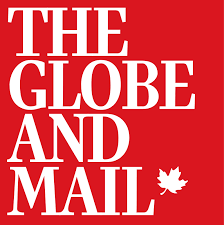« Best Caisse Scenario »
James Bradshawthe | The Globe and Mail« A debate is raging over whether Canada’s pension plans invest enough of their vast assets at home. And Charles Emond – the man charged with producing big returns while contributing to Quebec’s economy – is at the centre of it all.
Charles Emond leans into the microphone, ready to act out a perennial ritual for the CEO of Quebec’s largest pension fund manager: parrying questions from politicians about whether its investments in its home province—which account for one-fifth of its $434-billion portfolio—are enough.
It’s late April, and Emond is appearing at a hearing at Quebec’s National Assembly, where parliamentarians are zeroing in on a perceived dilution of the share of assets the Caisse de dépôt et placement du Québec has invested at home, from 26.1% a decade ago to 20.3% today. Shouldn’t the Caisse, they ask, at least get back to that previous threshold?
Speaking softly in French, Emond reminds MNAs that the Caisse set a target two years ago to boost its assets in Quebec from $78 billion to $100 billion by 2026. But what’s even more relevant, he says, is that with $88 billion now invested in a province with a GDP of nearly $500 billion, “the Caisse is the pension fund that is the most invested, in the world, in its local economy.”
Seated at Emond’s left elbow, a powerful ally—Quebec Finance Minister Eric Girard—comes to the Caisse’s defence. “We must take into account the size of the fund, the size of the Quebec economy. We can’t compare percentages from different eras,” Girard told the MNAs. “What’s important is the Caisse is a partner to the Quebec economy.”
(…)
There are checks and balances that help guard the Caisse’s independence, says François Dauphin, CEO of the Montreal-based Institute for Governance of Private and Public Organizations (IGOPP). One is the intense scrutiny on the Caisse. “People want to make sure that they do get the same returns as they would” in any other pension fund, Dauphin says.
The Caisse’s long investment horizon, and the fact that its leaders sometimes outlast governments, affords another layer of protection.
The government selects board members, including the chair, and approves the CEO, which certainly gives it influence. But those appointments are guided by recommendations from board committees, and if government ignored all input, “you would see people resigning from the board,” Dauphin says. “They wouldn’t accept that.”
Tessier, the former chair, held his fingers up in the shape of a zero to show how many times the government called to tell him to do something. “It never happened,” he says.
The current chair, St-Gelais, who spent his career in finance and provincial government, says he “would never agree to let the government put its hands in the Caisse decision-making process. I will just stand up and tell the government, ‘You have to stop doing this—it won’t work with me, and you will have to find someone else if you want to go this way.’”
Ultimately, says Dauphin, there may be one sure-fire defence against undue influence or criticism: “Good results, and long-term good results. They did not let go of their returns to invest in the local economy. In that sense, I think it’s probably the best answer they can give.” »



